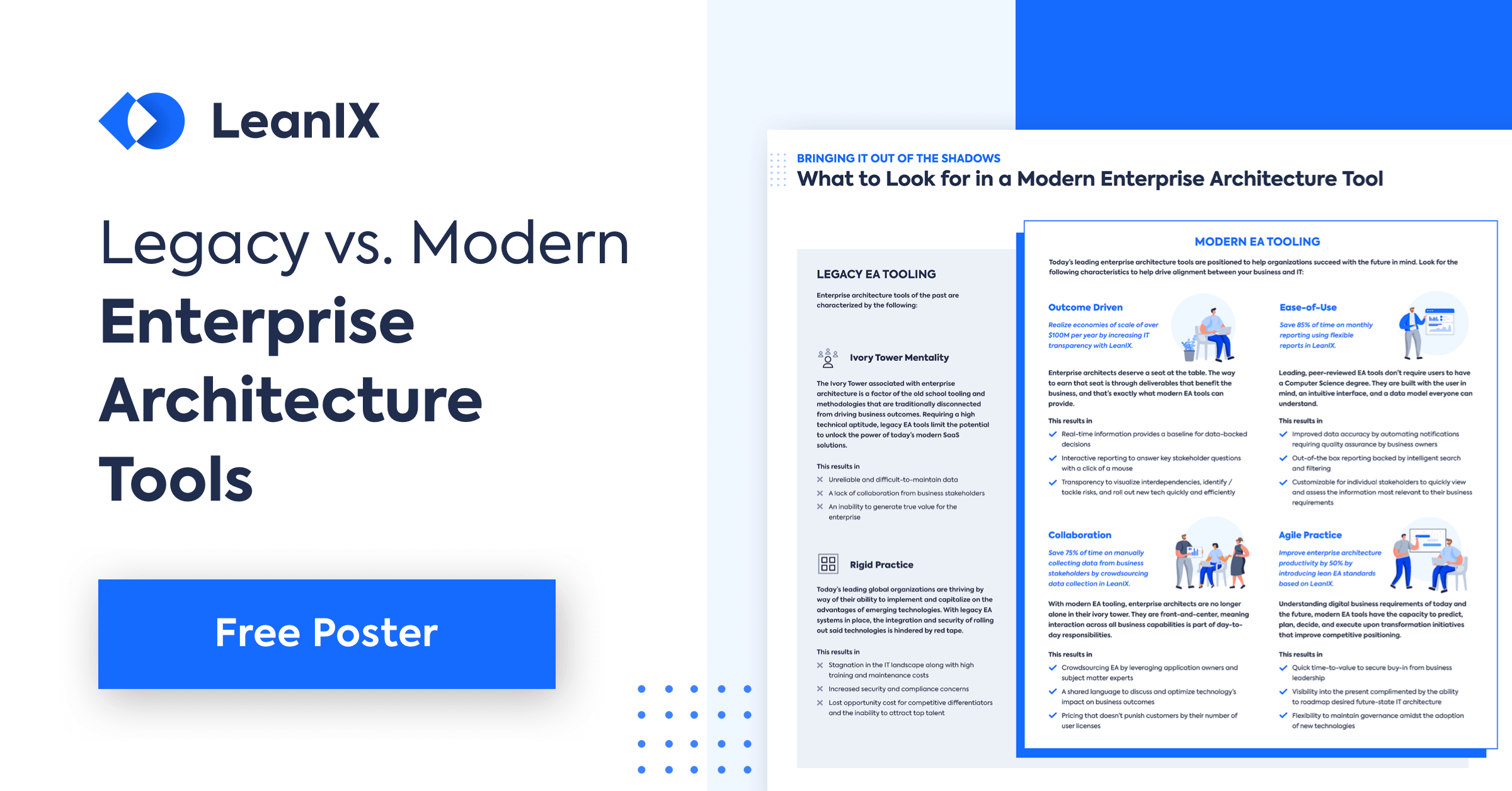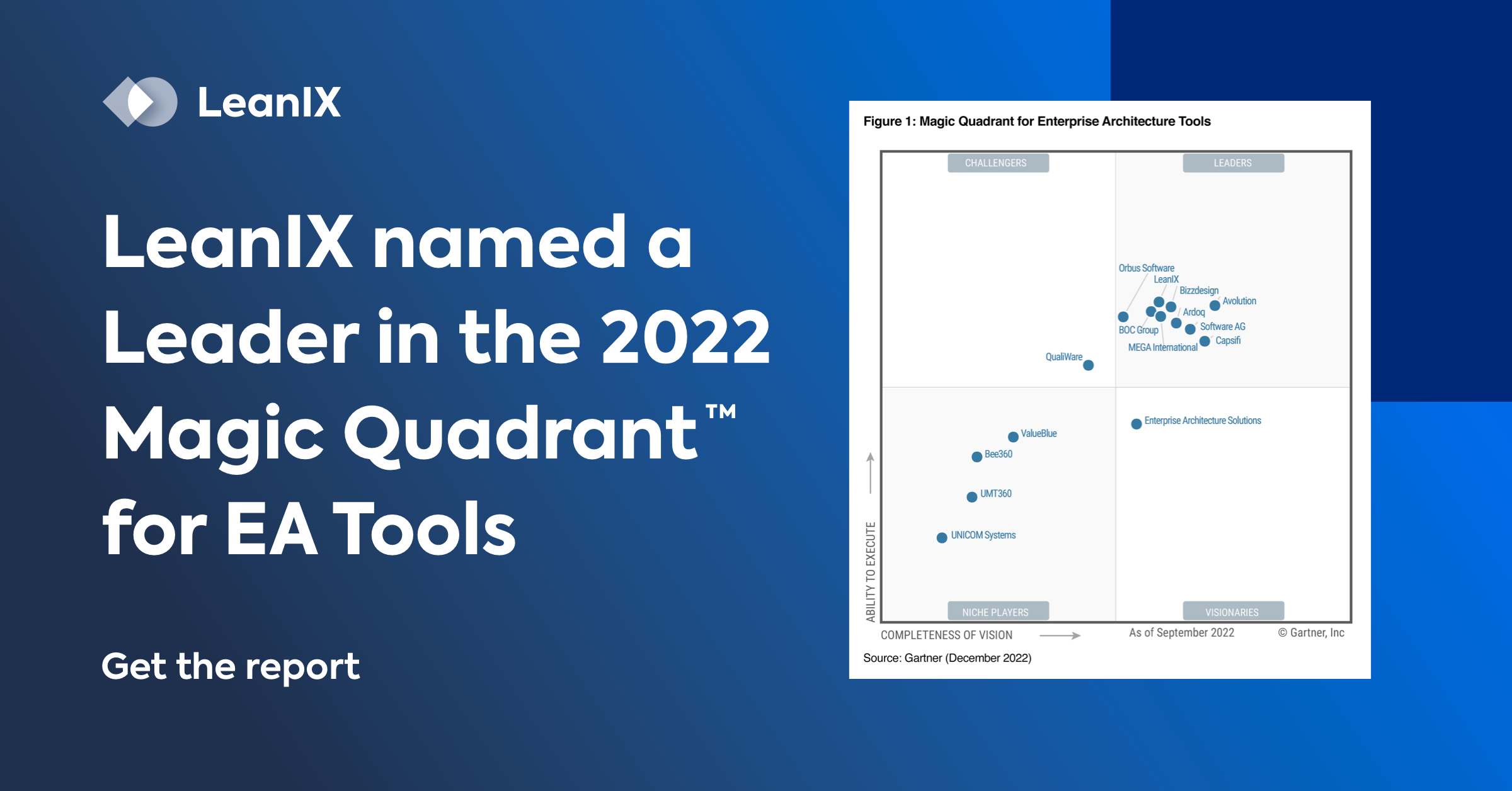
Which came first — the chicken or the egg? The seed or the plant? Enterprise architecture (EA) or the enterprise architecture tool?
We may not have the existential answers, but we can tell you about EA origins: The discipline and practice of enterprise architecture far predates the development of modern EAM software tools.
In fact, the original principles of EA developed in the mid-20th century still inform the features and capabilities developed for today's enterprise architecture toolset.
In this article, we’ll explore these foundational concepts, why they have stood the test of time, and how modern EAM tools keep them alive in practice.
Quick Takeaways
- Enterprise architecture has its origins in manuscripts published by Professor Dewey Walker around Business Systems Planning (BSP).
- The Zachman Framework, published by Walker's student, John Zachman, was published in 1987 and is often credited as the first formal EA framework.
- Modern enterprise architecture tools are designed to power principles outlined by Zachman in his original work, including a holistic view of the enterprise, understanding of relationships between IT components, and optimization of technology assets.
Enterprise Architecture: A Brief History
Believe it or not, modern enterprise architecture began all the way back in the 1960s when Professor Dewey Walker developed architectural manuscripts around Business Systems Planning (BSP). Twenty years later, one of Walker’s students, John Zachman, structured and published these documents in the IBM Systems Journal in 1987 — this time as official EA frameworks.
Zachman developed the frameworks in response to rapidly advancing technology that was, for the first time, beginning to look like the systems we use today.
In the 1980s (and even before that), smart companies could foresee that technology was fast becoming a central part of business operations. They realized that companies who could quickly adopt and deploy emerging technology would likely win out over their competitive peers.
At this time, enterprise architecture was seen as a way to map out the systems and tools the company used along with all the interconnections and dependencies between them. The goal at first was to simply understand what the company was running on, and then to optimize the architecture to ensure business success.
Today, the goals of enterprise architecture remain much the same. The difference is that IT infrastructures are more complex and interconnected than we could have foreseen a few decades ago. And, frankly, the methods used to manage EA back then can't keep up with the demands of the present.
Enter modern enterprise architecture tools.
New SaaS platforms power smart, automated, and scalable EA management while still accomplishing the original goals of enterprise architecture pioneers: to understand and optimize the technology resources for maximum business value.
How Traditional EA Exists in Modern Enterprise Architecture Tools
A holistic view of the enterprise
Enterprise architecture is rooted in Business Systems Planning (BSP), which aims to define and smartly design information systems for large organizations. Of course, information systems look drastically different than they did in the 60s, 70s, or 80s. As they have evolved, so has EA as a discipline and practice.
While traditional BSP was certainly forward-thinking in its way, the architectural designs it produced tended to be relatively static, with updates an arduous and tedious task. This rather academic approach to enterprise architecture is ill-suited to the quickly evolving IT landscapes companies now maintain. Any meaningful or useful view of the enterprise's IT architecture must be continuously updated and accurate in real time.
That's what modern EAM tools deliver.
Reports and visualizations like application landscape reports, current state architecture maps, and business capability maps all provide a level of real-time insight – whether high level or granular – needed to understand and optimize complex, modern IT architectures.
An understanding of relationships
A foundational part of EA in its earliest forms was the understanding of how IT systems interact. This principle remains relevant and central to EA and the capabilities built into enterprise architecture tools. Understanding key relationships between IT assets helps business leaders optimize resources, eliminate redundancies, capitalize on existing capabilities, and identify opportunities for improvement.
Further, the rate at which companies must now be able to evolve and transform requires a clear view of how any given change will impact other parts of the IT infrastructure and business.
The optimization of IT assets
John Zachman himself defines his EA framework, first published in 1987, as follows:
“The Framework for Enterprise Architecture is not ‘the answer.’ It is a tool . . . a tool for thinking. If it is employed with understanding, it should be of great benefit to technical and non-technical management alike in dealing with the complexities and dynamics of the Information Age Enterprise.”
Still sounds pretty accurate — no?
Today’s best EAM platforms are built to embody the very same attributes Zachman lists as he expands on the purpose of his EA framework, including:
- Simple - easy to understand
- Comprehensive - addresses the entire enterprise
- Language - communicates complex concepts in non-technical terms
- Planning Tool - ensures you never make decisions in a vacuum
- Problem-Solving Tool - allows you to isolate variables without losing sight of the whole enterprise
- Neutral - objective representation of the enterprise as it actually exists
- Raw Material for Engineering - provides the facts needed to execute initiatives
This list proves that while infrastructures have changed and become vastly more complex, the guiding principles behind how to manage them through EA have largely stood the test of time.
Level Up Your EA Strategy with LeanIX Solutions
Enterprise architecture may have come long before the modern EAM tool — but the latter is now essential for organizations that want to execute a strategy for today’s rapidly-paced business environment. The LeanIX EAM platform helps organizations leverage technology, make decisions, and manage change with our outcome-driven approach.
Learn more about our solutions or schedule your demo to begin your transformation.




